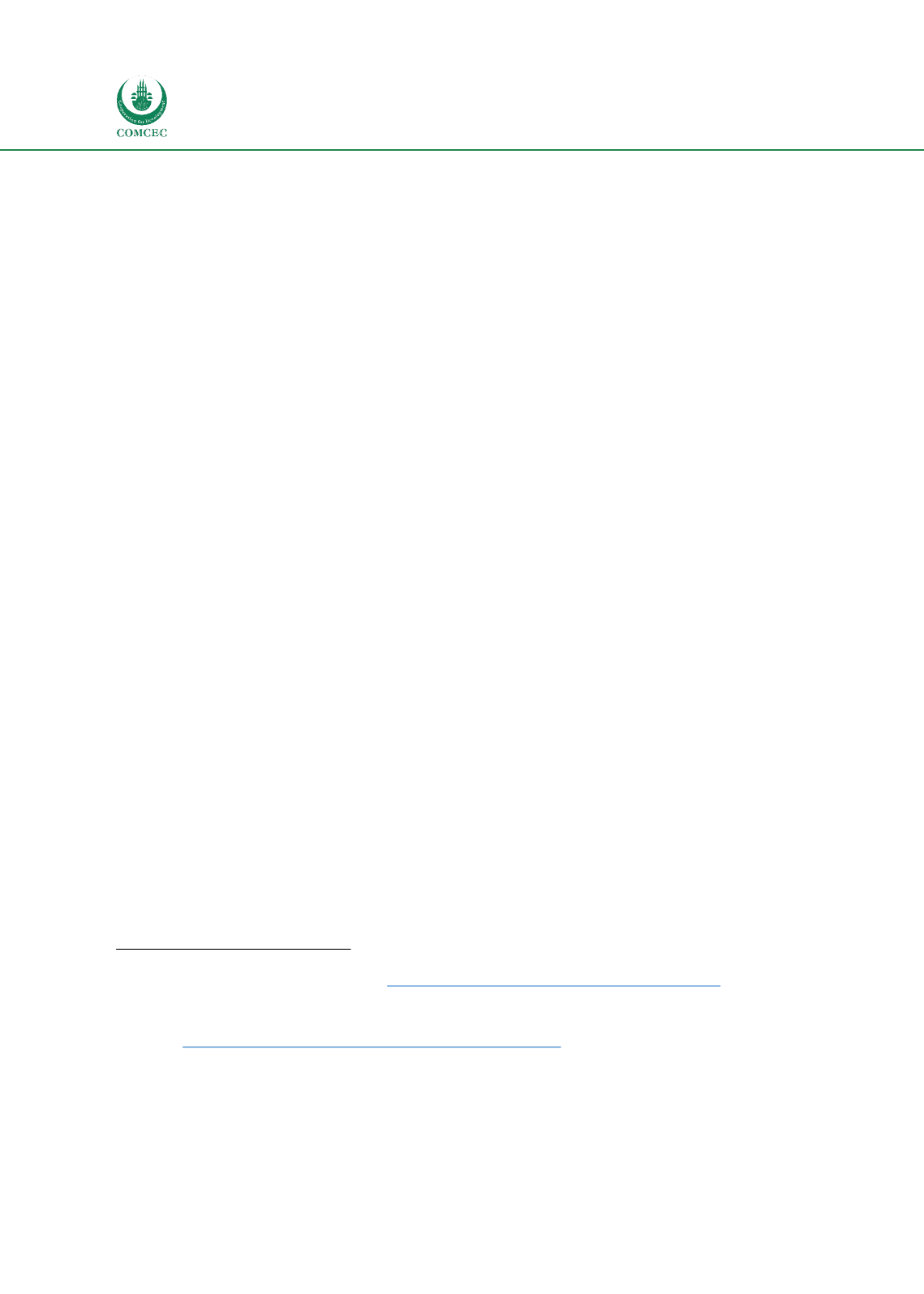

Improving Agricultural Market Performance
:
Creation and Development of Market Institutions
134
processed agricultural – together with mineral commodities – make up the bulk of its export
portfolio.
369
Indeed, Indonesia exported for more than US$24.71 billion of food products over
2014 while it only imported US$11.60, leading to a food trade surplus of US$13.11 billion.
370
The trade surplus for agricultural products only equals US$17.23 billion, as Indonesia exported
US$34.87 billion over 2013, compared to US$17.65 worth of agricultural imports.
371
Nevertheless, Indonesia’s agricultural trade surplus has been somewhat volatile due to sharp
turnaround in the food balance.
372
Indonesia’s key export commodities include tree crops (e.g. palm oil, coconut, rubber, coffee,
tea, and spices). Together with higher valued fruits and vegetables, these commodities account
for more than 80% of Indonesia’s agricultural exports.
373
However, Indonesia’s export of
agricultural products has been hampered due to the effects of the 1997 Asian financial crisis,
which led to a collapse of many Indonesian financial institutions and increased country risk, in
combination with declining and volatile commodity prices (e.g. rubber and coffee). In fact, the
export of promising raw materials is frequently challenged by SPS compliance issues (e.g.
nutmeg, mango, and mangosteen),
374
further emphasizing the need for more agricultural
processing and value-addition.
Despite being a key producer of rice, Indonesia continues to import rice. Rice, together with
cereals, oilseeds, and sugar, account for nearly 80% of all agricultural imports. It is particular
the increase of sugar and rice imports which seem to challenge Indonesia’s current food trade
surplus. The import of sugar and rice are concerns to the Government of Indonesia, which is
particularly trying to re-structure the sugar industry by closing formerly inefficient state-
owned mills and re-locating sugar cane production from Java to other areas.
Policy & Regulatory Framework
The control and administration of the agricultural sector is stipulated in the Basic Agrarian
Law No. 5/1960.
375
Indonesia’s Ministry of Agriculture has the mandate to develop and
implement medium-term agricultural development plans in consultation with other Ministries
and agencies. Issues concerning food security and food self-sufficiency, increasing food
consumption, encouraging agricultural value-addition and agri-food product diversification,
improving the sector’s competitiveness, and protecting farm incomes are priorities which have
driven these agricultural policies.
376
Reducing the country’s high reliance on imports of staple
goods (e.g. wheat, soybeans, rice, and sugar) is high on the Government’s agenda.
The Indonesian Government intervened strongly in the agricultural sector during 1970s and
1980s to encourage wide-spread adoption of green revolution technologies.
377
Many trade
369
WTO (2013),
Indonesia Trade Policy Review Report by the Secretariat
, Geneva: World Trade Organization.
370
FAO (2015), FAOSTAT Indonesia, available a
t http://fenixservices.fao.org/faostat/static/syb/syb_101.pdf [Accessed June
2017].
371
COMCEC (2016), COMEC Agricultural Outlook 2016, pp. 55-90, Ankara: COMCEC.
372
FAO (2003), “WTO Agreement on Agriculture: The Implementation Experience - Developing Country Case Studies,”
available a
t http://www.fao.org/docrep/005/y4632e/y4632e00.htm#Contents [Accessed June 2017].
373
Ibid
374
Interview conducted with Indonesian Quarantine Agency in Jakarta, July 11, 2017
375
WTO (2013),
Indonesia Trade Policy Review Report by the Secretariat
, Geneva: World Trade Organization.
376
WTO (2013),
Indonesia Trade Policy Review Report by the Secretariat
, Geneva: World Trade Organization.
377
FAO/INRA (2016),
Innovative markets for sustainable agriculture - How innovations in market institutions encourage
sustainable agriculture in developing countries
, p. 2, Rome: Food and Agriculture Organization of the United Nations and
Institut National de la Recherche Agronomique.


















